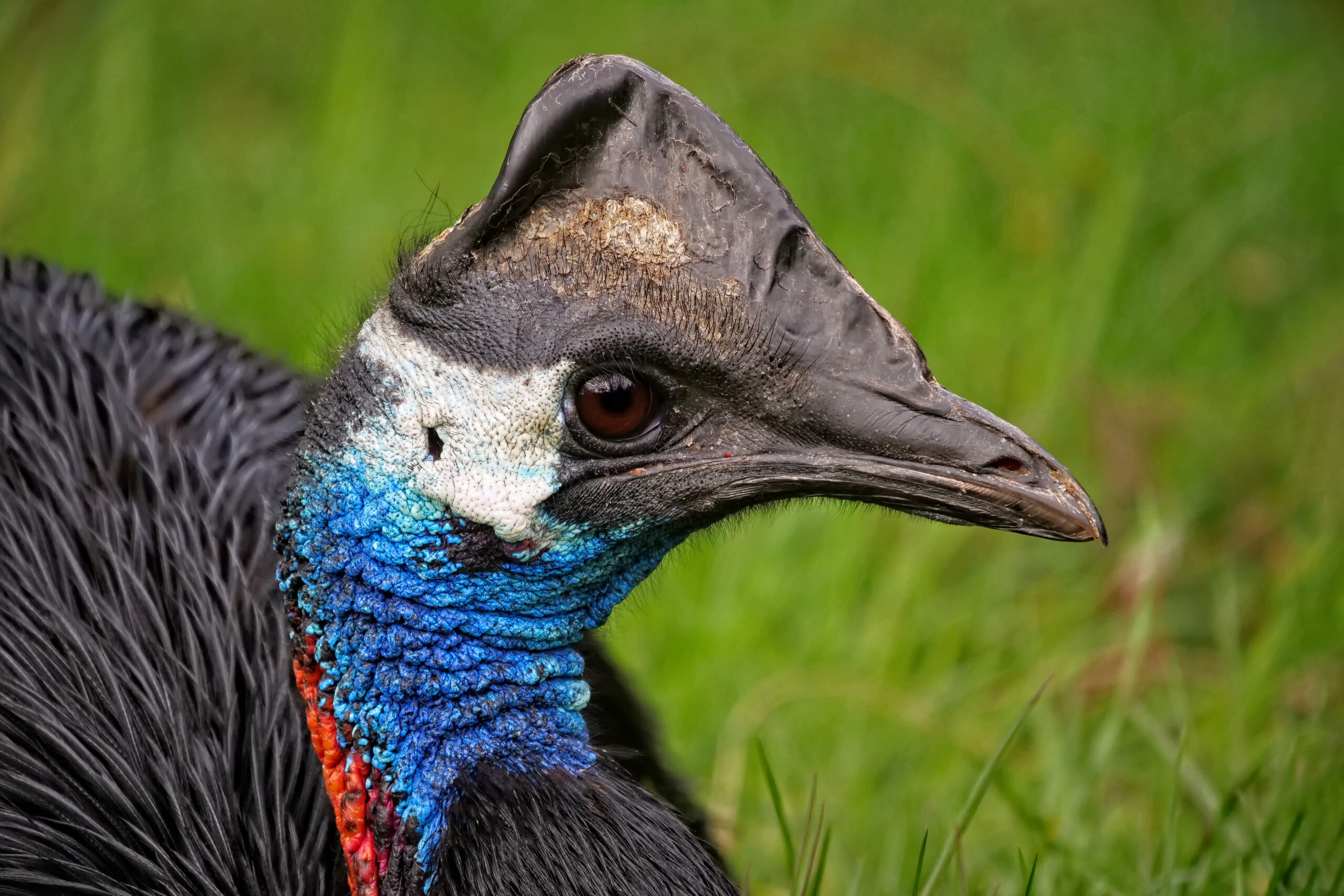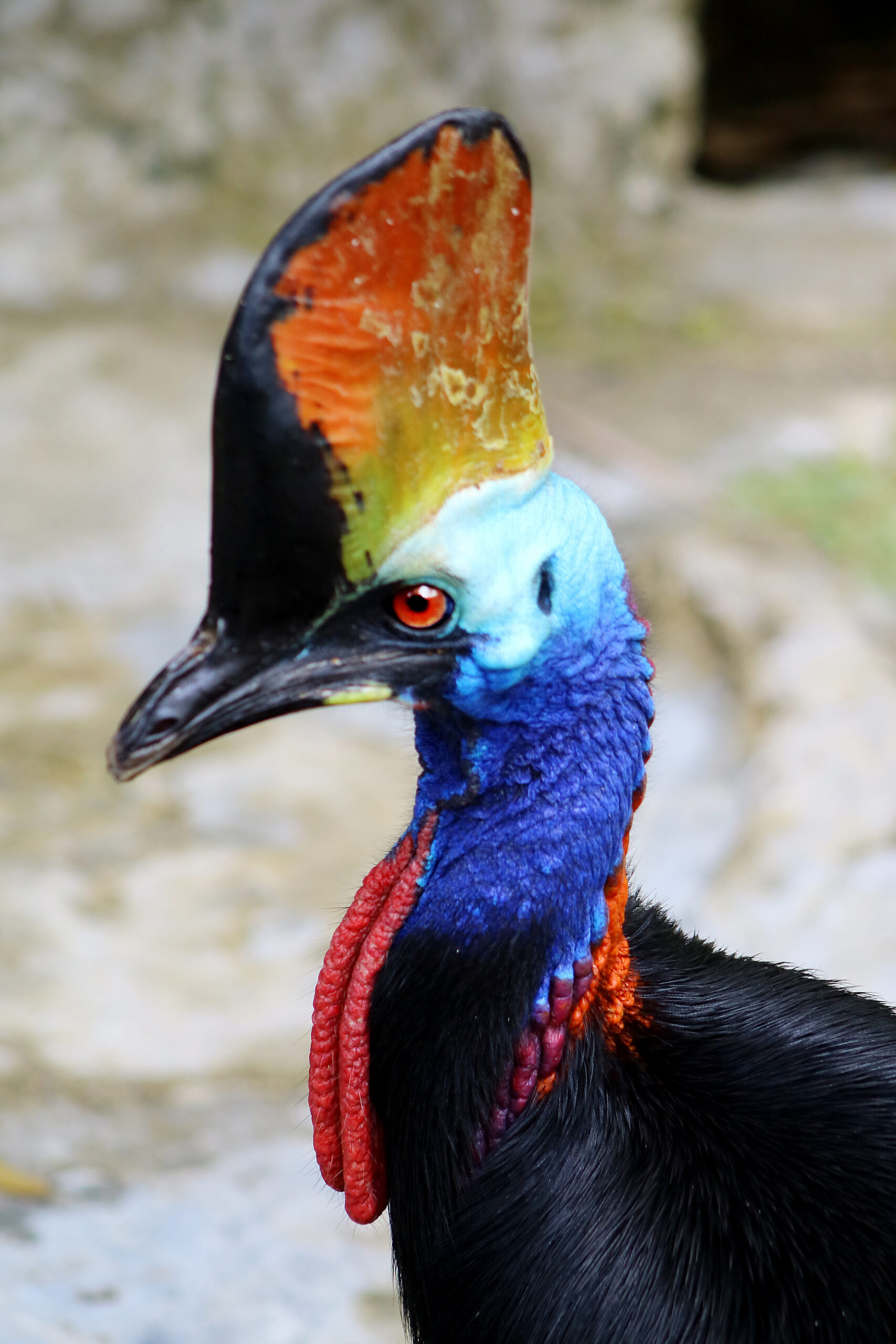Close Up Cassowary on a green background, Adobe Stock, by Alastis

PRESENTS
The Cassowary
By Katelin Kukk
Imagine you are hiking through a dense rainforest 60 million years ago and you see a 6-foot-tall bird resembling a dinosaur. These primeval survivors are called cassowaries. Cassowaries are large, colorful, flightless birds that bear quite a resemblance to velociraptors. They can be found in the tropical rainforests of Australia, New Guinea, and other islands nearby.

Dwarf Cassowary, Casuarius bennetti, Adobe Stock, by Holger T.K.
Behavior
Cassowaries are solitary animals who are naturally shy, unless they are provoked causing them to become quite aggressive. They use their strong, dagger-like feet to jump, run, and defend themselves against other predators. Their powerful legs allow them to run up to 30 miles per hour through thick brush. Cassowaries are also omnivores that forage for fruit and small animals like frogs or small lizards.

Northern Cassowary, Casuarius unappendiculatus, Adobe Stock, by AGAMI
Fun Facts
While it is normal for females to raise offspring in most of the animal kingdom, male cassowaries are the sole caregivers of their young. They prepare the nests for the female to lay her eggs which she quickly abandons. The males then raise their young for up to 9 months after they are born. During this time, the females go off and mate with at least 2 more males before the breeding season is over. Although females remain detached, males are very protective of their young while they are raising them and will fiercely defend them against anything.

Southern Cassowary, Casuarius casuarius, Adobe Stock, by Ronny Sefria
Conclusion
To conclude, cassowaries are fascinating creatures that have adapted to survive millions of years. While they normally do not go out of their way to attack others, they can be very territorial and have even been known to kill humans. It is advised to stay out of their way if you come across one not only due to their capability of killing, but because they are listed as vulnerable by the IUCN. With our knowledge and understanding of cassowaries, we should aim to protect this fierce species so they can live forever more.
-Katelin Kukk
Harleysville, Pennsylvania
– – –

NatEnvo was formed by BioTriad Environmental, Inc. to provide entertaining and informative media while keeping the wonders of nature in the public eye.

Spectacular creatures roamed the earth in the time long before the history of man. Species alive so far in the past, the only traces we find today are bits of rock and stone. Ages faded to dust in the wind. Yet there are those who remain. We call them Primeval Survivors. Do these remnants of the past hold the secrets of the ages?


